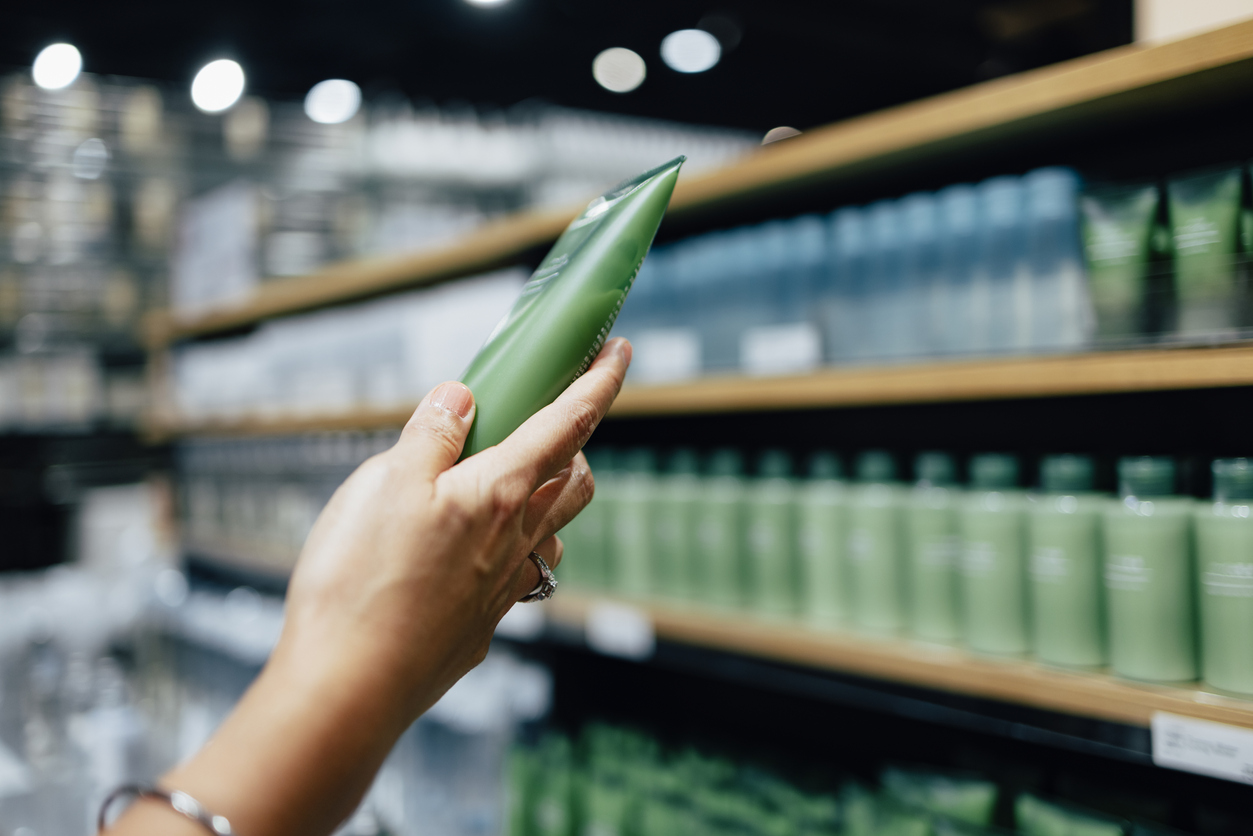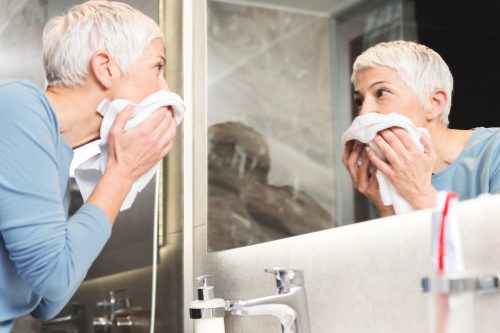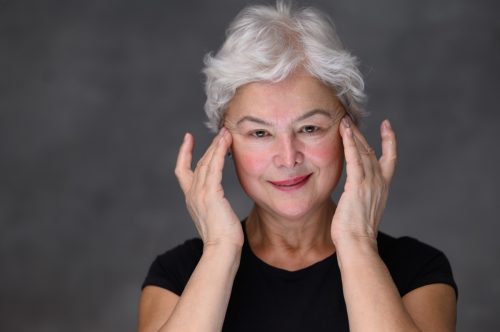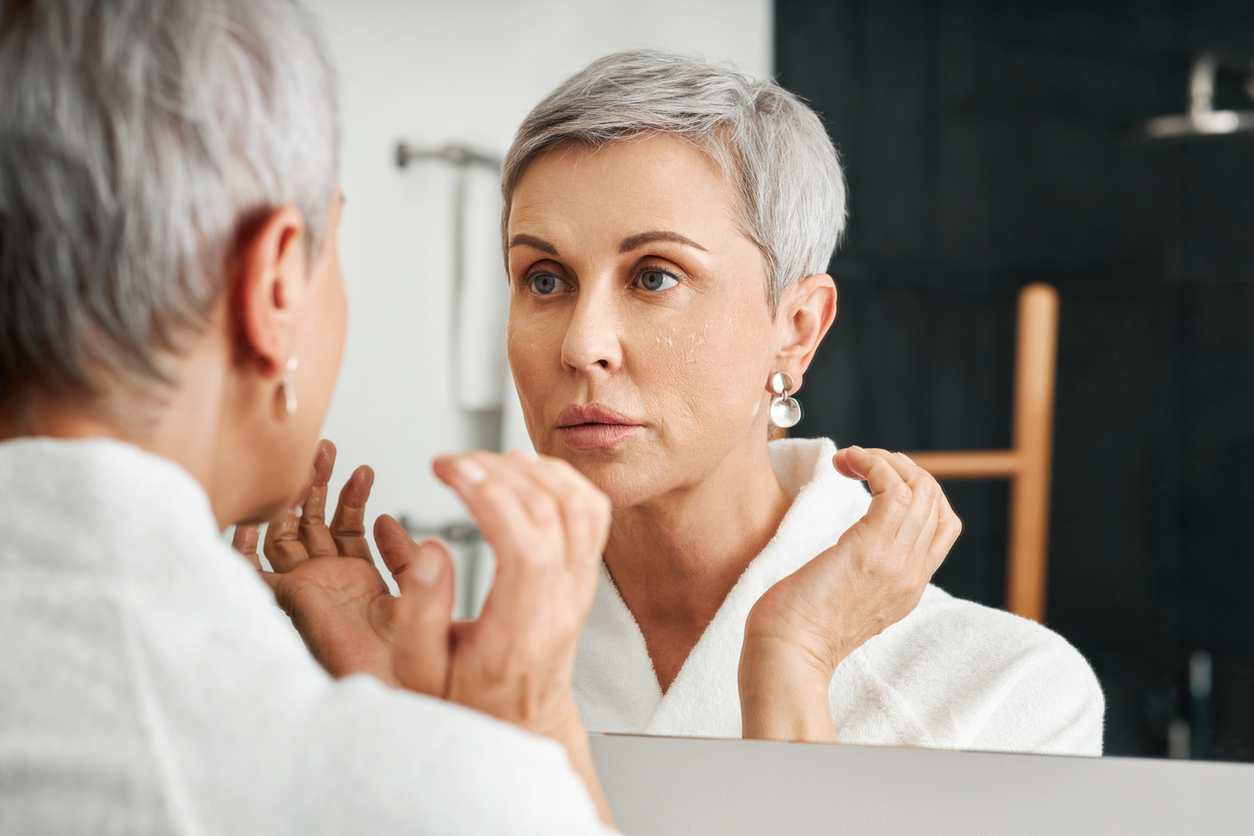
The anti-aging industry is expected to reach approximately $73 billion by 2027, which means that as time goes on, we’ll only have more and more products to choose from. For women over 50, this can make finding the right eye cream especially difficult, as the delicate skin around the eyes is one of the most targeted and sensitive areas.
“As you age, dark circles, puffiness, and wrinkles around the eyes tend to stand out,” explains Erica Suppa, expert skin care specialist and the founder and formulator of Fresh Faced Skin Care. “The best way to minimize the effects of aging is to use products that focus on making the eye area brighter, firmer, and more youthful.”
But the key to effective eye creams is using them correctly. We consulted Suppa, along with other beauty experts and dermatologists, to get their best tips on making your eye cream actually work after age 50. Read on for their advice.
READ THIS NEXT: If You’re Over 50, Sleeping With This Item Will Prevent Aging.
When picking out an eye cream or serum, choosing one “that is specifically formulated for mature skin is important as we age,” notes Alpana Mohta, MD, certified dermatologist and medical advisor. “Look for ingredients such as retinoids, peptides, and antioxidants, which can help to boost collagen production, smooth wrinkles, and protect the delicate skin around the eyes.”
If you’re looking to brighten up dark under-eye circles, Mohta recommends products with vitamin C and kojic acid.

If you’re keeping your eye cream in the medicine cabinet, you may want to consider moving it to a cooler space, as this can help keep the product effective for longer.
“I love to put my eye cream in the refrigerator so it really gives my under-eyes the wake-up call they sometimes need,” says Madelyn Cusimano, certified esthetician for The A Method.
Plus, if your eye cream contains retinol or vitamin C, “The cold temperatures slow down the degradation of both ingredients,” explains beauty subscription company Birch Box.
READ THIS NEXT: How to Embrace Keeping Your Hair Long After 50.

In order for eye cream to properly take effect, you want to rid your face of any oils or makeup. “Start by cleansing your skin and drying it with a clean towel,” says Alberto de la Fuente Garcia, MD, a board-certified dermatologist at VIDA Wellness and Beauty. And don’t forget to wash your hands, too, since you’ll be using them—one finger, specifically–to apply the product.

De la Fuente Garcia advises using your ring finger to gently apply a pea-sized amount of product. “The ring finger is the weakest finger and is best for eye cream application as it puts less pressure on delicate skin.” However, he notes that you can (carefully) use a Q-tip if you prefer.
You also want to avoid rubbing in the eye cream. “Use a patting motion to apply for both the upper and underneath eye area,” says Patricia Heitz, a consultant at Sage Wellness and Healing. “The tissue in the eye area is thin and easily stretched, which over time can create looser skin there.”
For more beauty news sent directly to your inbox, sign up for our daily newsletter.

After you pat your eye cream on, you may want to try a device that gently massages the product into the area. Known informally as an eye-brator, it can enhance the eye cream or serum’s effectiveness, says Suppa. “It penetrates beneath the skin faster using 10,000 vibrations per minute,” she explains. “This helps to infuse the serum deeper into the skin layers.”
“You can also try using a face roller with your eye cream,” Mohta says. “The gentle massaging action of a face roller can help to boost circulation, which can help to reduce puffiness and dark circles around the eyes.”

Many people only use eye cream as part of their nighttime ritual, but you’ll actually want to apply it twice a day for the best results. “In general, the best time to apply eye cream is both morning and night,” de la Fuente Garcia notes, because “you’ll be able to provide your skin with continuous hydration throughout the day.”



